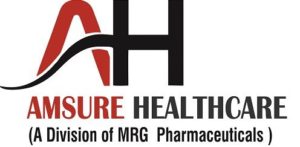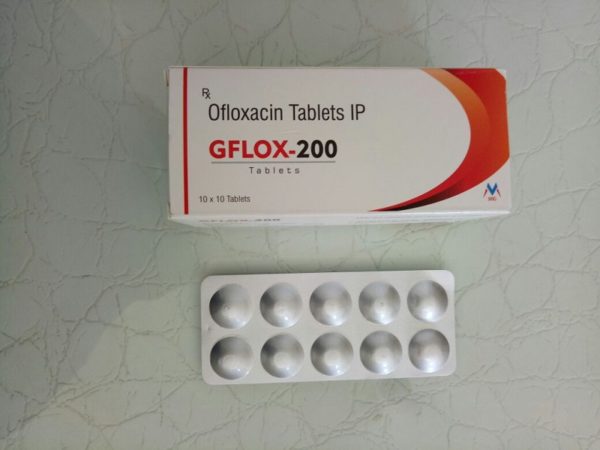GFLOX-200
COMPOSITION: OFLOXACIN 200 MG
- Reviews (0)
- Indications
- Product Description
Be the first to review “GFLOX-200”
ACUTE EXACERBATION CHRONIC BRONCHITIS, COMMUNITY-ACQUIRED PNEUMONIA, GONOCOCCAL CERVICITIS/URETHRITIS, INFLAMMATORY DISEASE, PROSTATITIS, SINGLE LESION PAUCIBACILLARY LEPROSY, SKIN STRUCTURE INFECT, TYPHOID FEVER, URINARY TRACT INFECT, AMOEBIASIS, AMOEBIC DYSENTERY, AMOEBIC DYSENTERY , & AMOEBIC LIVER ABSCESS, ANAEROBIC BACTERIAL INFECTION GIARDIASIS TRICHOMONIASIS
Ofloxacin is a fluoroquinolone antibiotic considered to be a second-generation fluoroquinolone.
Ofloxacin is a fluoroquinolone which inhibits bacterial topoisomerase IV and DNA gyrase enzymes required for DNA replication, transcription, repair and recombination. It has activity against a wide range of gram-negative and gram-positive microorganisms.
Absorption
Rapidly and well absorbed from the GI tract (oral); peak plasma concentrations after 0.5-2 hr. Rate, but not extent, delayed by the presence of food.
Distribution
Widely distributed into body fluids, CSF, tissues, bile (high concentrations); crosses the placenta and enters breast milk. Protein-binding: 20-32%.
Metabolism
<10% of a single dose is metbolised. Converted to desmethyl and N-oxide metabolites; desmethylofloxacin has moderate antibacterial activity.
Excretion
Via urine within 24-48 hr by tubular secretion and glomerular filtration (75-80% as unchanged, <5% as metabolites); via faeces (4-8%). Elimination is biphasic with half-lives of 4-5 hr and 20-25 hours; prolonged in renal impairment (15-60 hours).
Nausea, vomiting, abdominal pain, diarrhoea; headache, dizziness, insomnia, hallucinations; leucopenia and eosinophilia; vaginitis; dysgeusia; tendon damage and rupture; anorexia; tremor; photosensitivity; hypersensitivity reactions. Discontinue if psychiatric, neurological or hypersensitivity reactions occur.
Potentially Fatal: Anaphylaxis; rarely seizures.
Prescribing Ofloxacin tablets in the absence of a proven or strongly suspected bacterial infection or a prophylactic indication is unlikely to provide benefit to the patient and increases the risk of the development of drug-resistant bacteria.
Adequate hydration of patients receiving Ofloxacin should be maintained to prevent the formation of a highly concentrated urine.
Epilepsy or other predisposition to seizures; known or suspected CNS disorders; renal, hepatic impairment; myasthaenia gravis; superinfection; children <18 yr; exposure to strong sunlight and UV light; ensure adequate hydration; elderly.
Probenecid decreases elimination. Antacids may reduce ofloxacin absorption, avoid for 2 hr either side of administration. Cimetidine may increase ofloxacin concentrations. Monitor blood glucose in patients on antidiabetic medication.
Potentially Fatal: Corticosteroids may increase risk of tendon rupture. Increases effects of oral anticoagulants, ciclosporin, theophylline. Increased risk of seizures with NSAIDs. Avoid in patients taking QT prolonging medication (e.g. class Ia or III antiarrythmics, astemizole, terfenadine, cisapride, erythromycin, pentamidine, phenothiazines and some TCA).






Reviews
There are no reviews yet.